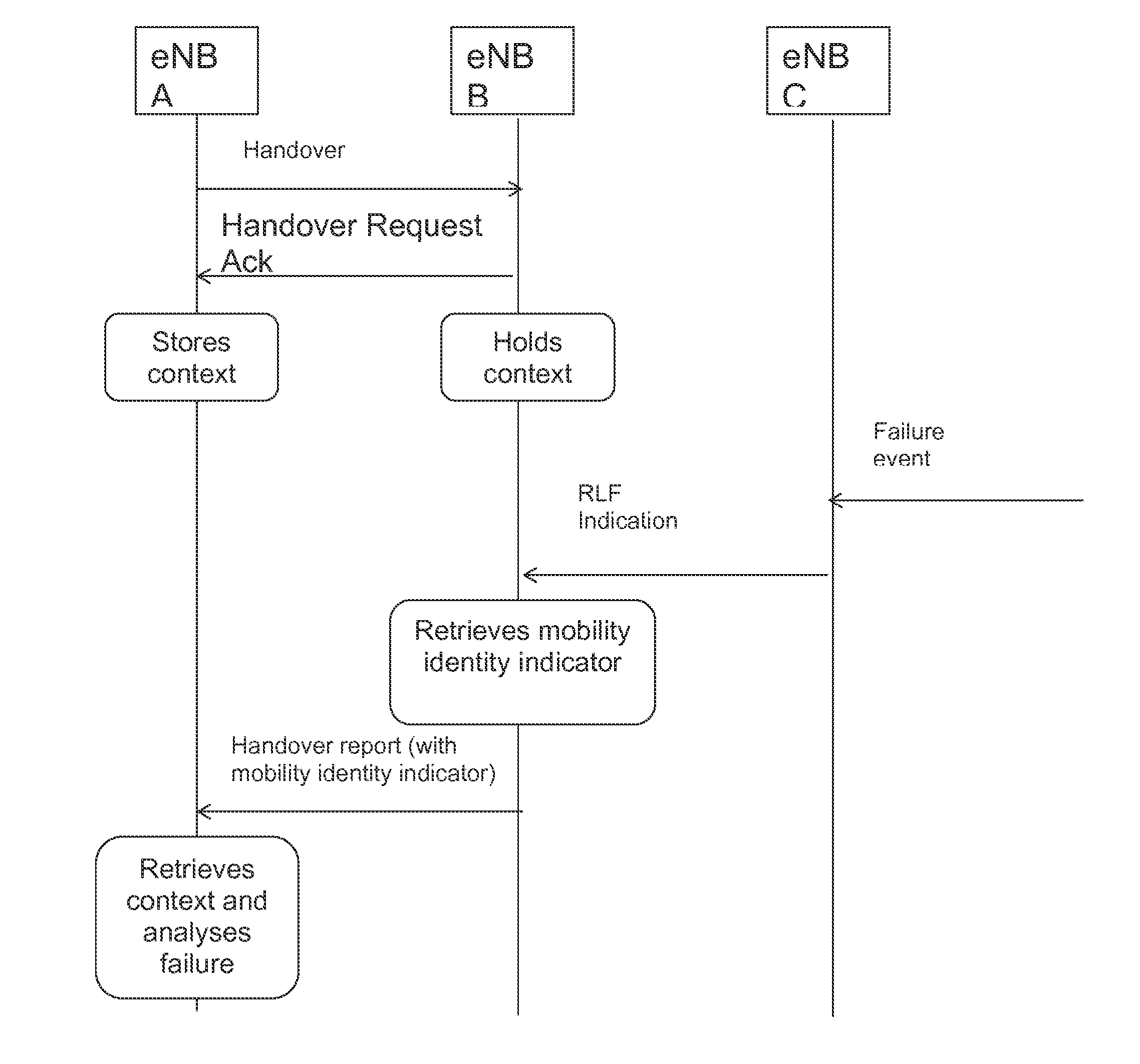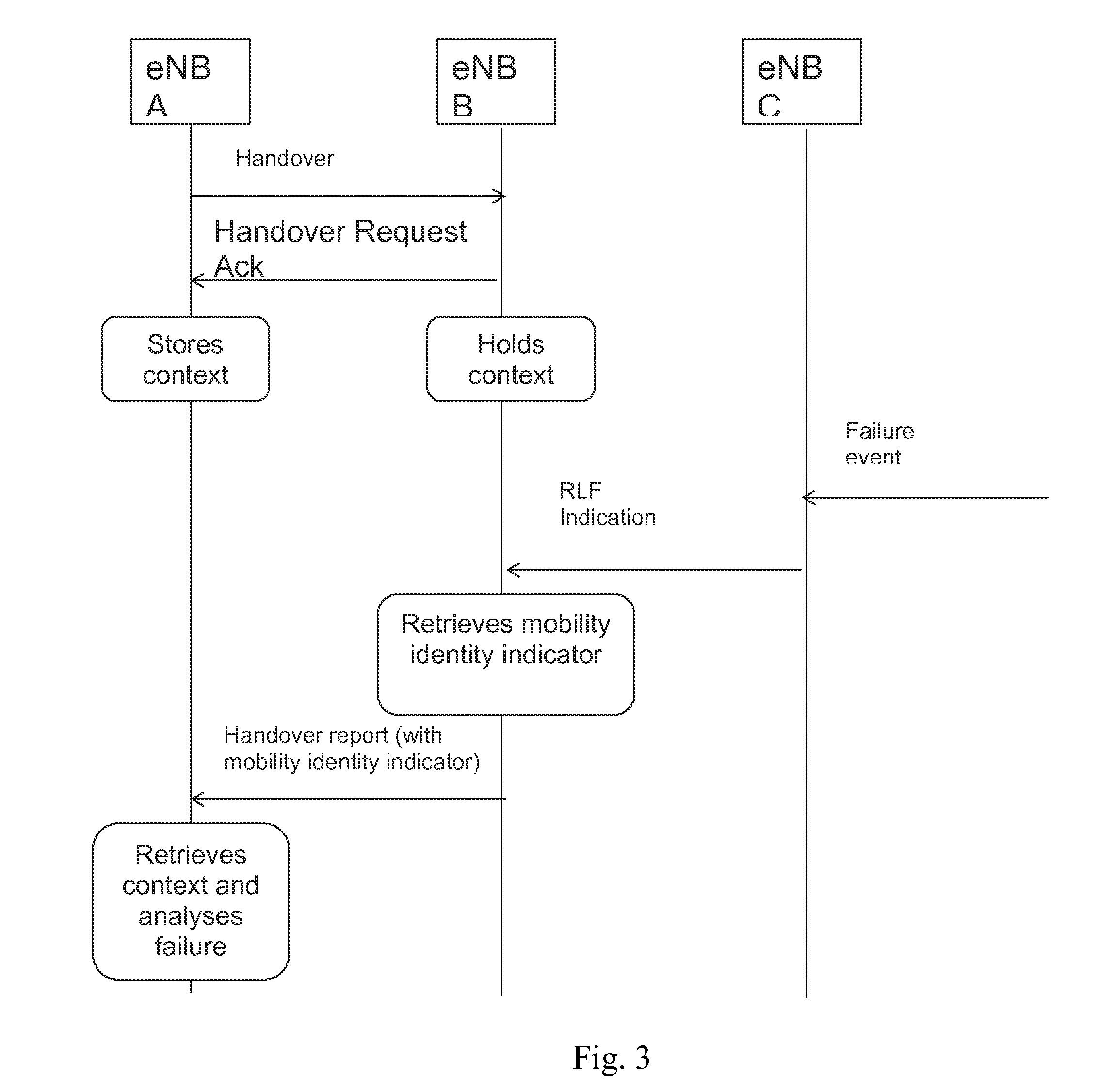Identifying mobile station in a cellular wireless communication system
a technology of cellular wireless communication and mobile station, applied in the direction of wireless communication, network data management, electrical equipment, etc., to achieve the effect of improving system performance, reducing drawbacks, and reducing costs
- Summary
- Abstract
- Description
- Claims
- Application Information
AI Technical Summary
Benefits of technology
Problems solved by technology
Method used
Image
Examples
case i
[0058] RLF indication triggered at RRC re-establishment in this case, the UE provides the CRNTI and optionally a shortMAC-I to the eNB C which sends this in an RLF indication message to eNB B. The eNB B retrieves information for this UE, and includes for example the CRNTI used in cell A together with the time the handover from the eNB A to the eNB B occurred (as a timestamp or the elapsed time since this handover occurred) in the Handover Report to eNB A. This provides enough information for the eNB A to retrieve the context of this specific UE.
case ii
[0059] RLF indication triggered at RRC connection setup; adding CRNTI and shortMAC-I to the RLF report)
[0060]Similar to case I above, the UE provides the CRNTI and shortMAC-I used in the eNB B (but carried in the RLF report) to the eNB C which sends this in a RLF Indication message to the eNB B. The eNB B retrieves information for this UE, and includes for example the CRNTI used in cell A together with the time the handover from the eNB A to the eNB B occurred (as a timestamp or the elapsed time since this handover occurred) in the Handover Report to cell A. This provides enough information for the eNB A to retrieve the context of this specific UE.
case iii
[0061] RLF indication triggered at RRC connection setup; adding CRNTI and time between RLF and RRC re-establishment in the RLF report.
[0062]The UE provides the CRNTI used in the eNB B and the time between the failure and the re-establishment (from idle) to the eNB C. The eNB sends this in a RLF Indication message to the eNB B. The eNB B retrieves information for this UE, and includes for example the CRNTI used in cell A together with the time the handover from eNB A to eNB B occurred (as a timestamp or the elapsed time since this handover occurred). This provides enough information for the eNB A to retrieve the context of this specific UE. Another possibility is to re-use the reported time between the failure and the re-establishment (from the RLF report) since the time between failure and handover should be very small according to the definition of the wrong cell or too early failure case. Instead of reporting the time between the failure and the re-establishment in the RLF Report,...
PUM
 Login to View More
Login to View More Abstract
Description
Claims
Application Information
 Login to View More
Login to View More - R&D Engineer
- R&D Manager
- IP Professional
- Industry Leading Data Capabilities
- Powerful AI technology
- Patent DNA Extraction
Browse by: Latest US Patents, China's latest patents, Technical Efficacy Thesaurus, Application Domain, Technology Topic, Popular Technical Reports.
© 2024 PatSnap. All rights reserved.Legal|Privacy policy|Modern Slavery Act Transparency Statement|Sitemap|About US| Contact US: help@patsnap.com










